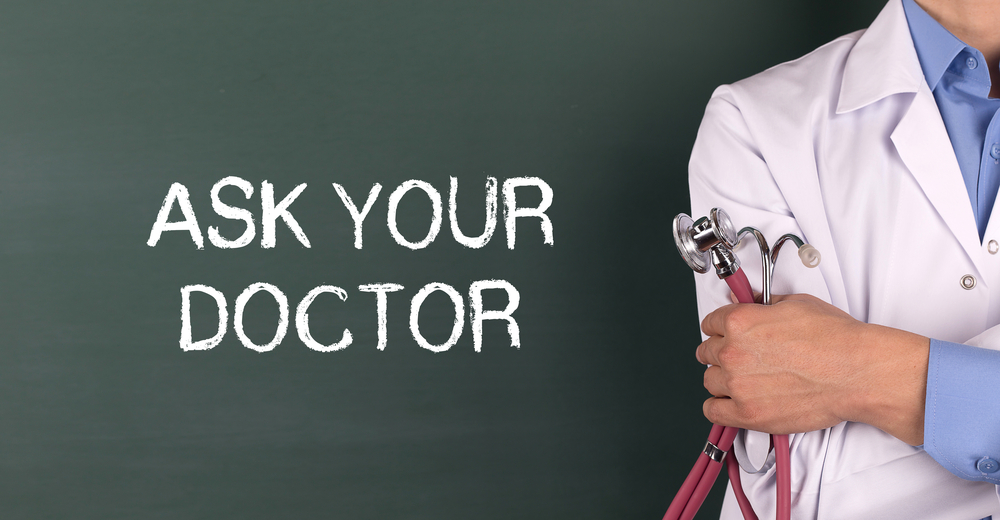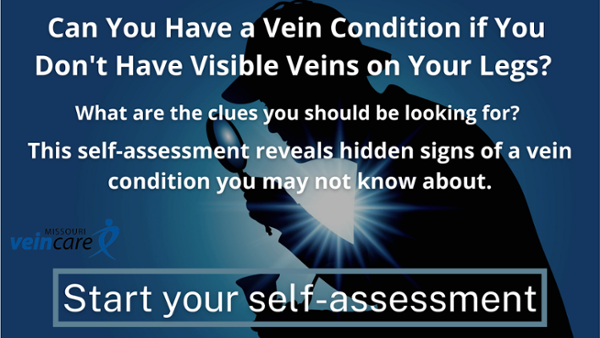Symptoms of a Vein Condition: FAQ with Dr. Ryan

In my practice, it’s common for people to say that they didn’t realize they had a vein condition. Many people experience symptoms, but don’t attribute those symptoms to chronic venous insufficiency. I hope to educate the public and let them know that many of the things they write off as “simply getting older” are, in fact, highly treatable conditions. Symptoms of a vein condition show up in a variety of ways, some visible on the skin…some not.
In this post, I discuss 6 different symptoms of a vein condition. In many cases, earlier treatment would help to prevent some of the more severe symptoms.
1. Reduced Activity
Reduced activity is a common symptom of a vein circulation problem. Fortunately, it’s a condition that improves with treatment. People have reduced activity for a number of reasons related to their vein condition:
-
Poor Sleep
Often, people have very poor quality sleep because the symptoms of a vein condition always worsen at night and interfere with sleep. A vein condition will also cause leg cramps and restless leg syndrome, which keep people from sleeping comfortably. -
Inflammation
Another reason is that the main problem with a vein circulation condition is stagnant blood that pools in their legs. The body’s response to that is to develop inflammation. Inflammation is known to just zap everyone of any energy they may have. -
Leg Fatigue and Pain
Finally, the fact that the inflammation condition is affecting your legs results in people not really wanting to walk or be active. Unfortunately for many people that causes weight gain because you can’t maintain or lose weight very easily unless you are burning calories and being active. A vein condition is often a hidden cause of weight gain.
Fortunately, the good news is that after treatments, energy levels increase, activity levels increase naturally and people experience a real boost in their health.
2. Numb, Cold, Tingling Feet
Numb, cold, or tingling feet are actually fairly common when associated with vein circulation problems. The symptom pattern is very specific when it’s related to a vein condition. The specific quality is that when people have numbness, tingling, or cold feet is that it always gets worse in the evening and at night. If it’s not and is instead constant throughout the day, then it’s likely not from a vein source.
The good news is that if your symptom pattern worsens in the evening, then vein treatments really help improve or resolve your symptoms.
3. Leg Fatigue
A common symptom of a vein condition is leg fatigue. It’s a problem that really affects people’s lives. They don’t move as much, they aren’t active and don’t engage in healthy activities, and their lifestyle suffers. The reason people get leg fatigue is that the circulation slows down with a vein condition. When the circulation slows down, the blood basically pools in your legs. It’s stagnant and not flowing properly. That allows a buildup of toxins in your bloodstream in your legs that really make the legs ache and hurt and feel tired.
The good news is that after treatment, the leg fatigue resolves and people are able to naturally resume their healthy lifestyle. Treatments allow circulation to speed back up and leg fatigue goes away. People are able to resume the activities they know and enjoy, and for some it even allows them to lose weight.
4. Itching
A symptom we see in vein circulation patients is itching. Itching is not the most common symptom but we do see it regularly. It is related to a vein condition, and the good news is that it does get better and usually goes away after treatment. The reason people itch in this scenario is that the vein circulation slows down and the blood flow becomes stagnant. The body has an inflammation response in the tissues to the stagnant blood. One of the characteristic findings of inflammation is itching. When there is inflammation in the tissues, some people can feel it. They itch and scratch and some people say it drives them crazy. The worst cases have open sores from itching and scratching their legs and ankles at night.
The good news is that it goes away with vein treatment. If you think this might be related to your vein circulation condition, the next step is a vein screen or a vein ultrasound to get it sorted out.
5. Burning & Stinging
Another symptom we sometimes hear from patients is burning and stinging in their legs and feet. This is a condition related to the vein circulation issue in their legs. The symptom is due to the fact that circulation slows down and results in stagnant blood flow, and stagnant blood flow then produces an inflammation reaction. The inflammation in the tissues irritates the skin nerves, and that is what results in burning and stinging. It is very unpleasant for people. The usual location for the symptom is directly over visible veins in the calves and feet, as well as in the toes. These symptoms, like all vein symptoms, are usually worse in the evening or at night.
But the good news is that after treatment it goes away, If you want to get that taken care of, the next step is a vein screening or a vein ultrasound to get your situation sorted out.
6. Ulcers and Skin Sores
Skin ulcers and skin sores are open wounds usually related to a vein condition. It is relatively uncommon and represents a very advanced vein circulation problem. Vein treatment makes it possible for the sores to heal and usually, and after treatments people who have this do get immediate relief. To prevent skin sores from happening, it is recommended that people go ahead and get their veins taken care of before they develop. The skin sore happens because the circulation has slowed down and the blood is now stagnant in your lower leg. That stagnant blood produces an inflammation reaction in the tissues.
Normally, inflammation is your body’s healthy way of protecting itself. However, inflammation is not healthy if it’s present in excess, which is the case with a vein circulation problem. With excessive inflammation, the skin breaks down and can’t heal itself.
The good news is that after treatment, the skin can restore its normal function and can heal, and the sores will go away. Because skin sores are advanced vein problems, most patients find that other symptoms like leg aching and leg cramps also go away after treatment.
There is Good News
As I've stated in each of these videos, each of these symptoms will improve or go away after vein treatments. It's important to seek treatment sooner rather than later and avoid the advanced stages of a vein circulation problem. After treatments, you'll feel better, your legs will look better, and you'll be able to get active again enjoying the things you used to do. A simple vein screening or vein ultrasound will be able to sort out what exactly is going on with your symptoms.


